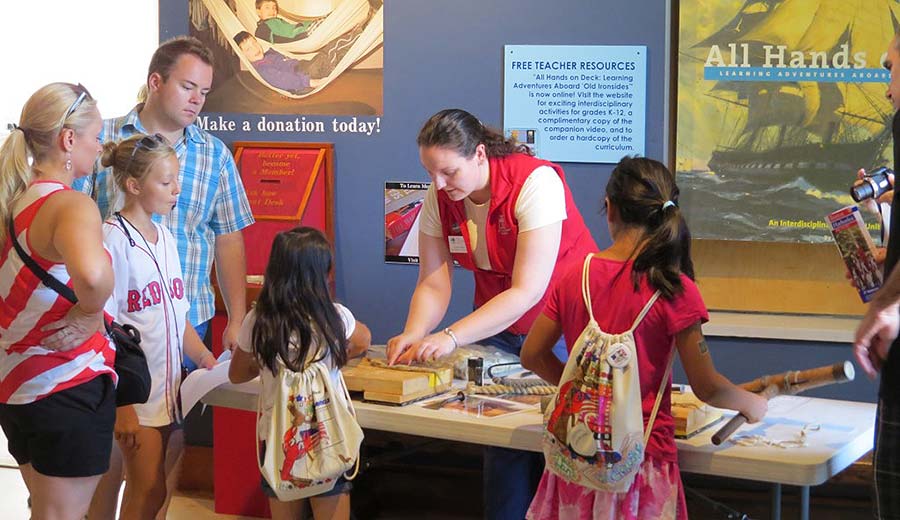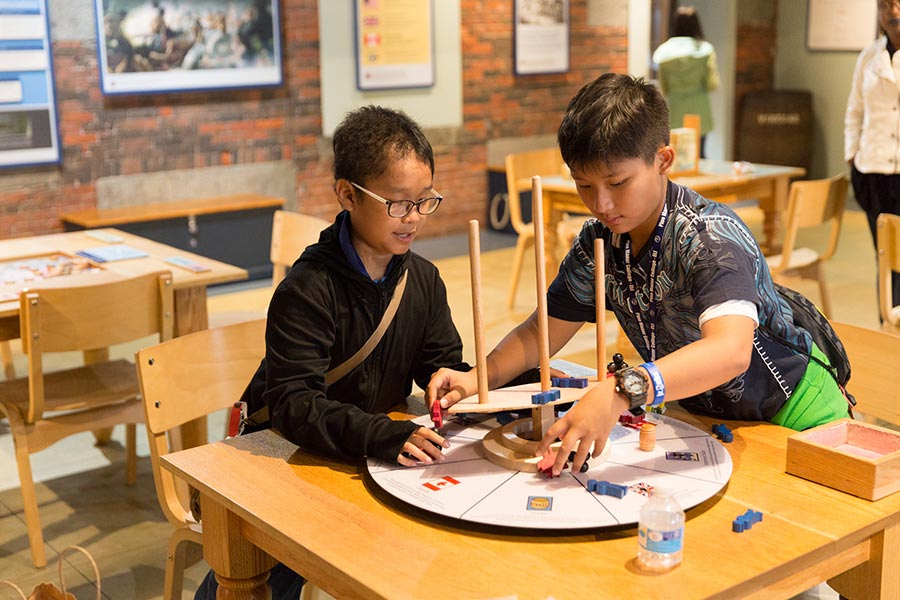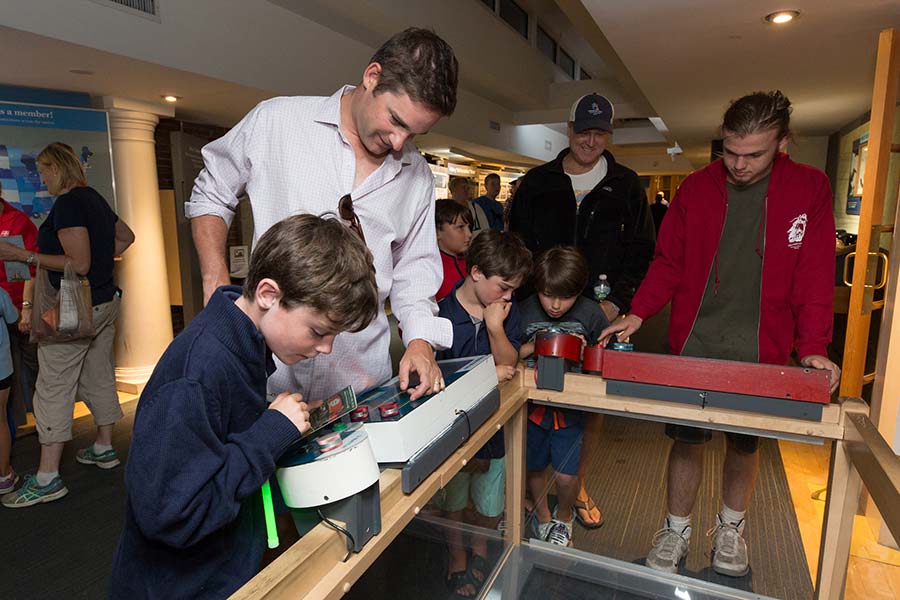Why it is Important
Multi-sided experiences allow family members to participate in an activity together and interact in ways that promote conversation and learning. At the USS Constitution Museum, tracking family interactions on the gallery floor revealed that multi-sided exhibit elements are where active conversations take place. Conversations are key to family learning.2
Multi-Sided Exhibits Take Up More Space, But That’s Ok!
This design strategy is extremely effective but often comes at a cost. Multi-sided exhibits take up a larger footprint. This is easy to accommodate in a spacious exhibit hall, but a challenge with limited gallery space. Creating an exhibit element that is multi-sided also reduces available wall space, but it is worth it. Multi-sided design requires deciding what content is most important and meaningful to your audience.
The benefit is changing how visitors use your institution. Families gather around multi-sided exhibits, interacting as a group rather than as individual museum goers. The resulting conversations can be the highest form of visitor engagement.
Put it into Practice
Designing activities so visitors can gather around and face one another enables family members to interact with each other as much as the exhibit or program itself.
Multi-Sided Setup
Designing facilitated activities where families can face each other has the added benefit of freeing the facilitators from being behind a table. The authoritative position of a facilitator behind the table can create a dynamic that limits family conversation. Facing family members toward each other lightens the mood and removes the stigma of the facilitator as omniscient and controlling. This multi-sided approach establishes a relaxed environment, allows for more family agency, and gives adult caregivers the opportunity to take on roles of intellectual authority. When the facilitator is free to move around as needed, he or she can offer guidance, ask questions, and encourage conversation around the space.


Face Families Toward One Another
Consider activities such as games or group challenges at a table that families can sit around. This communicates that conversation and social interactions are encouraged.
The flipbook is a simple tabletop activity that consists of pages with questions or information viewable from one side of a table and a related image viewable from the other side. At the USS Constitution Museum, we used this format to let visitors play the roles of recruit and recruiter, asking one another fun questions related to their suitability as a possible sailor in 1812: “Are you willing to eat bread as hard as a brick?” This questioning interactive engages both young and old visitors in large part by placing them face to face across the table.
Tipping Towards War is an interactive exhibit element at the USS Constitution Museum that explores the causes of the War of 1812. This content could have been presented on a wall in a graphically compelling format, but this would not result in conversation about the subject. By placing the activity on a table, families can gather around the exhibit element and take part. The multi-sided aspect of the interactive is key to its success.


